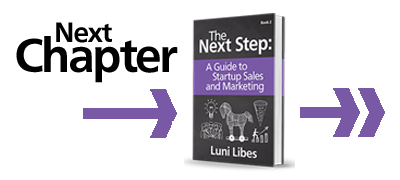$1.99, $4.99, or $99???
A major factor that affects the success rate of sales efforts is your price. What are you charging for your product/service? Why?
There is only one right answer to the latter question. You should not be basing the price on the cost of the parts or the cost of development or any of your other costs. You should not take your old salary, compute your hourly fee, and charge a multiple. You should not look at your cash needs, divide by the number of customers, and call that your price.
The proper way to price the product is to determine what it is worth to your customer and set a price below that value.
Let’s look at a simple example. You have a service that saves your customer $1,000. No customer will buy this for more than $1,000, so that is the price “ceiling.” It takes an effort to buy and use any new product, and thus your price can’t be $1,000, either. At $100, sales should be easy, but you are “leaving money on the table.” At $800, you are likely to find that some customers will not believe that the product actually saves them $1,000, and thus not everyone will buy. The ideal can only be determined through conversations and some trial and error, but a good place to start is $500, splitting the savings 50/50.
Similar logic works for a product that earns your customer money. If your product earns $1,000 for your customer, then you price your product so that your customer keeps at least half of that income.
For most products and services, the value to your customers is not that obvious. In these cases, you will determine the right price by talking to potential customers and especially by listening to their objections when they do not buy.
Some may directly say that your price is too high. In those cases, ask them what the right price would be and why. The “why” is most important, as it allows you to understand how the prospect is valuing your solution. They may be missing a critical part of your value, which is an opportunity to help them redefine their purchase criteria. Ask them about their budget and if their approval authority allows them to make the purchase decision. The more you engage them in a conversation, the more information you will have to determine an accurate price.
In addition, you can and should run tests on your pricing. If you have an exhibit at a conference, create a discount for conference attendees. Pick a day or a week and lower your price, to see what happens. In addition to the lower price enticing customers, the word “sale” can often bring in more sales, even when the discount is small.
Do keep in mind that, once a customer buys your product, if they see a lower price offered to others, they will not be pleased. If you discover your initial price was too high, give something to your early customers to make them feel appreciated.
Always ask yourself the question, “If my price were $1,000 more, would they have said no?” Constantly challenge your pricing. As you make more and more sales, it is not uncommon to be able to charge a higher and higher price.
A great example of this process took place at my second startup, back in the late 1990s. We built a software tool to help businesses gather feedback internally from their teams and externally from customers. Our business plan estimated the sale price at $5,000. We chose that number because we expected it to be a small fraction of the value of the product, and the upper limit that our customers at big companies could pay, without having to go get signatures from the executives or procurement offices. After talking with the first few dozen potential customers, we discovered that the perceived value of the product was in the hundreds of thousands of dollars and, with that knowledge, reset the pricing to $100,000 and redesigned the sales process to deal with the added complexity of selling to executives.
And, most importantly, once you have determined a price, do check this against your financial plan to determine if that price exceeds your costs. Remember, you ultimately need to earn a profit with your business, and you can do that only if your income exceeds your expenses. If the value to the customer is lower than what it costs you to make the product, then you do not have business.
Like every other step in this book, expect to iterate on your pricing. It will change as you make more sales, as you better understand your market, as your project evolves, and as your sales team matures.











